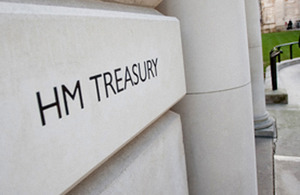Efficiency drive by government on PPPs nets £2.1 billion
Government's Operational PPP Efficiency Programme surpasses its target having secured £2.1 billion in savings - and is now seeking £2 billion extra in savings.

The central programme, focused on re-assessing the contracts for operational Public Private Partnership (PPPs) projects, was established in early 2012 and aimed to find efficiency savings worth £1.5 billion. Today (27 March 2015) the Treasury was able to confirm that public sector organisations from across local and central government had reported returns for the programme to the value of £2.1 billion in December 2014.
There are approximately 700 PPP contracts covering local authority schemes such as schools, and larger infrastructure projects including hospitals, roads and waste management projects. Over the past few years, local procuring authorities have reviewed their existing contracts and arrangements with the private sector; securing efficiency savings by changing the parameters of services or finding better use of the assets concerned.
Looking ahead, the programme reports that there is still further potential of £2 billion in savings currently being explored through changes to the scope of contracts, more efficient utilisation of facilities, and other testing of options within project delivery.
The Chief Secretary to the Treasury, Danny Alexander, said:
Too many of the old PFI deals were poorly negotiated and did not offer good value for taxpayers – with high costs draining local and national coffers. This programme has ensured proper management of contracts between the private sector and the public sector, ensuring that taxpayers are getting the best possible value for their investment.
This programme has already saved £2 billion – more than originally planned. And the work has revealed that another £2 billion of savings is possible, and we intend to get every penny we can back. Public and private sectors often work well together – but getting the best value for the taxpayer must always come first.